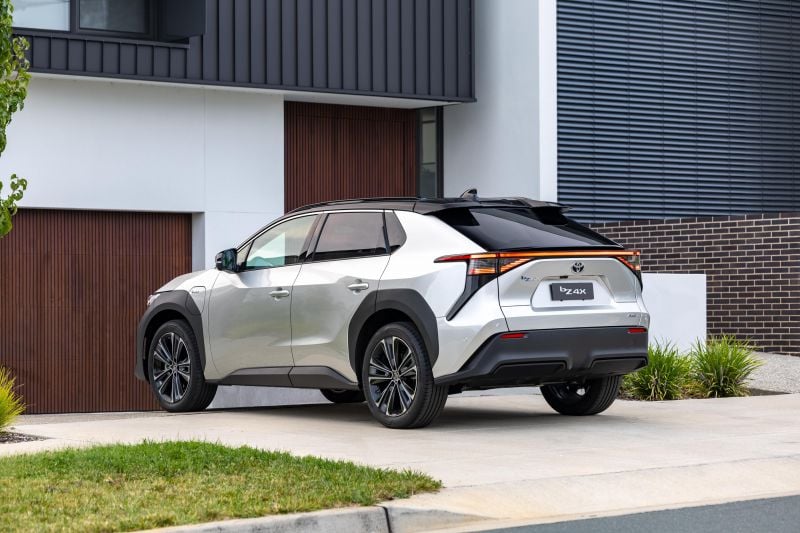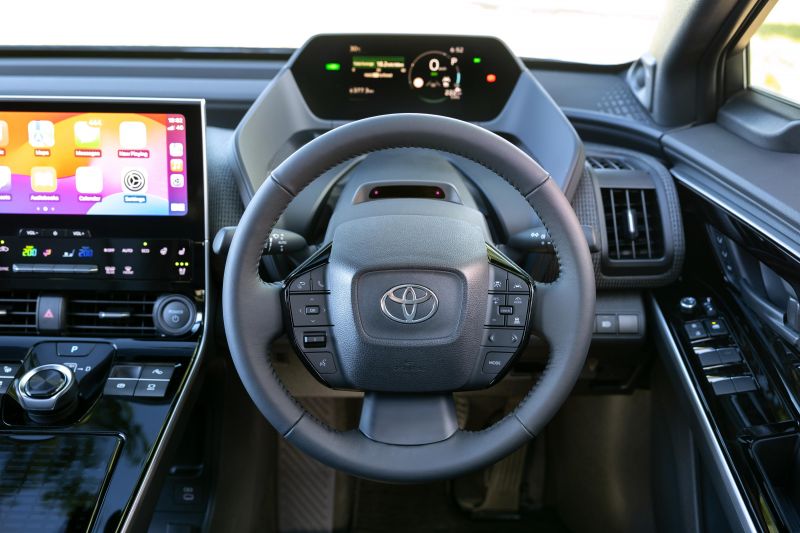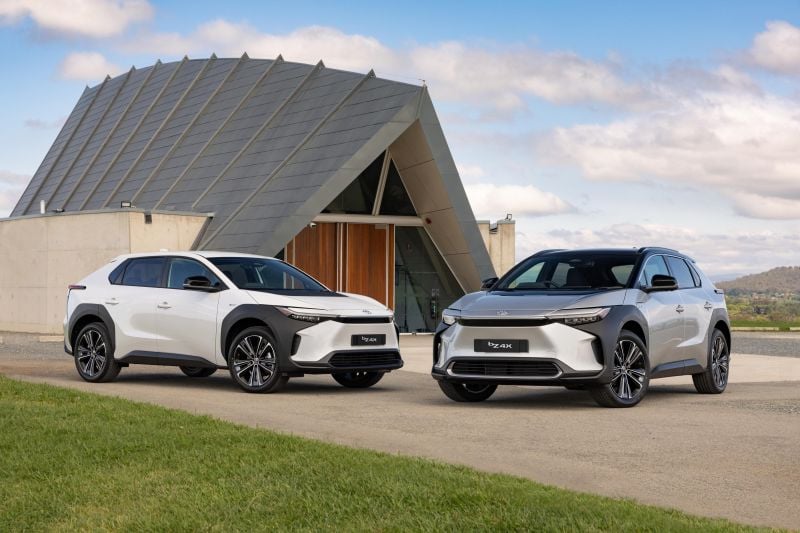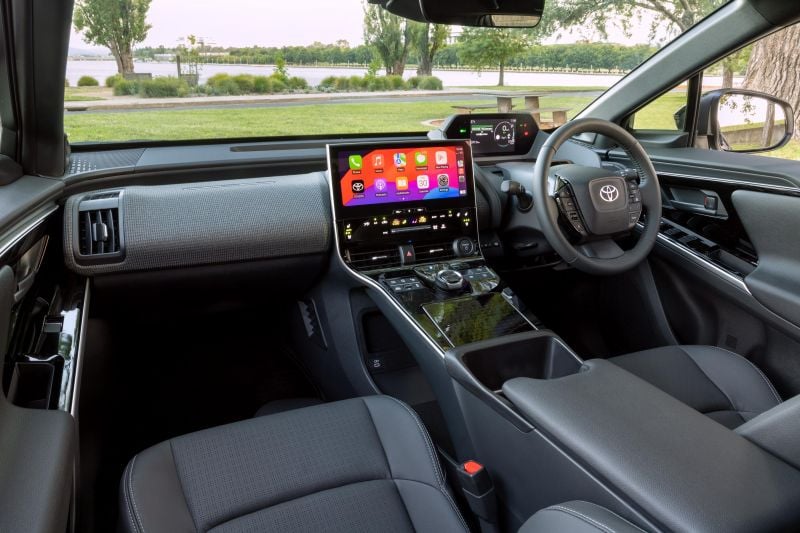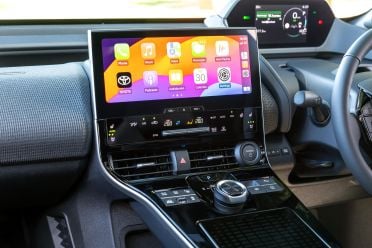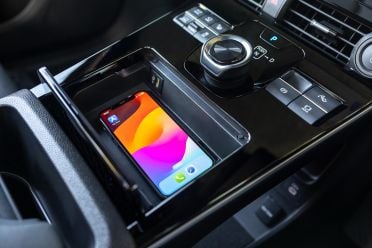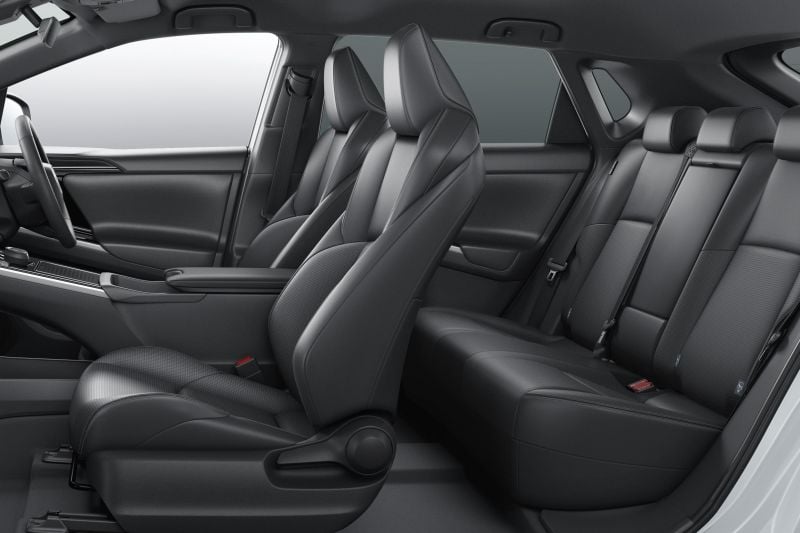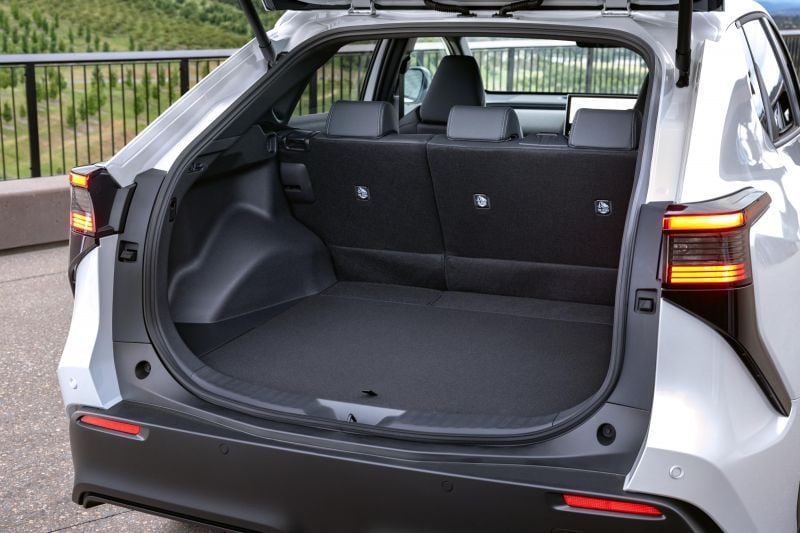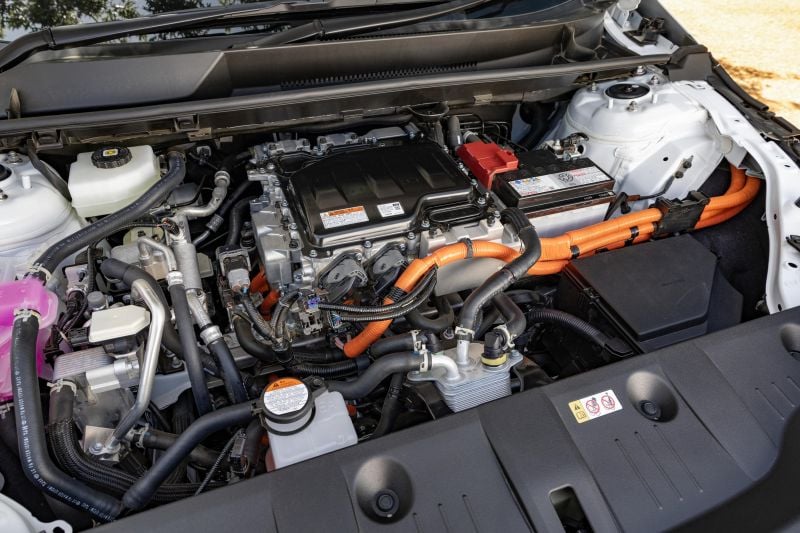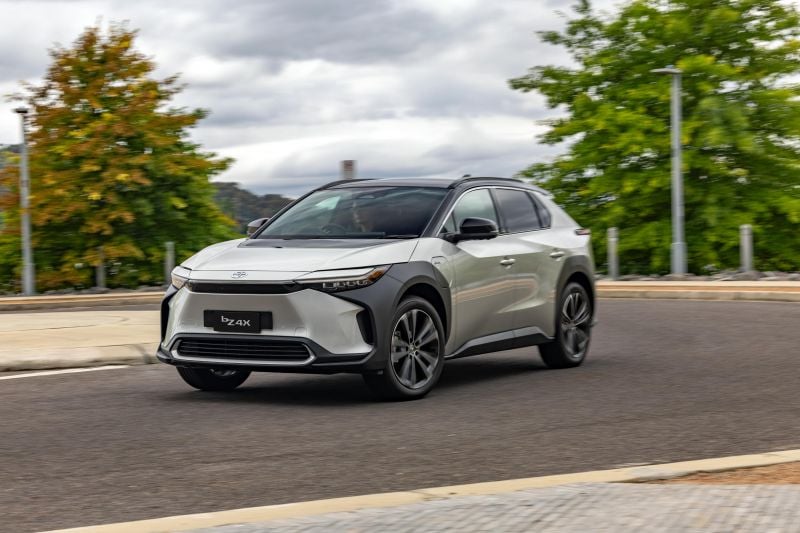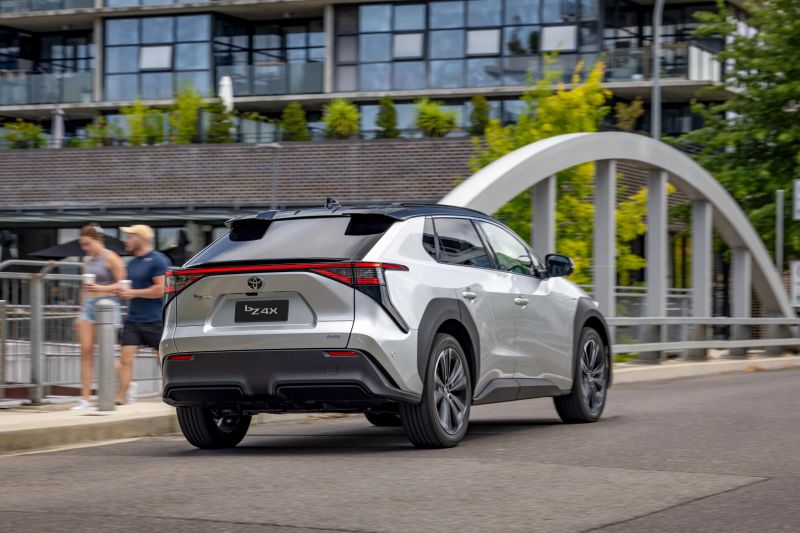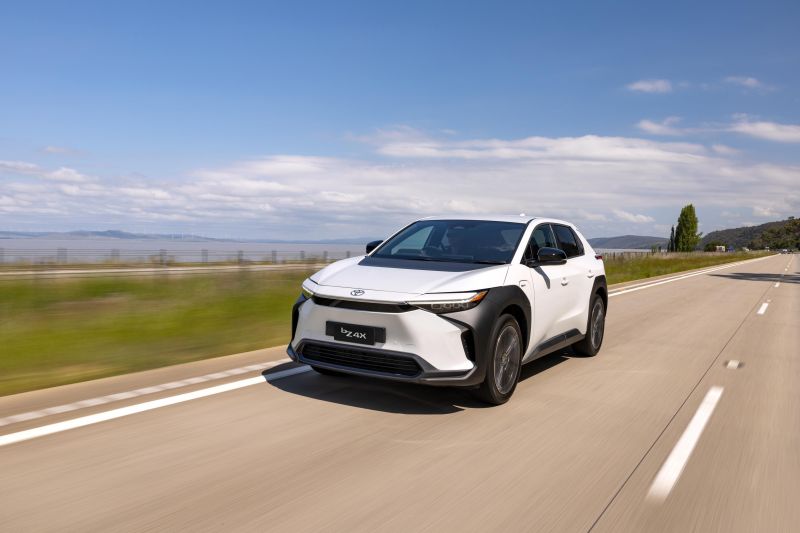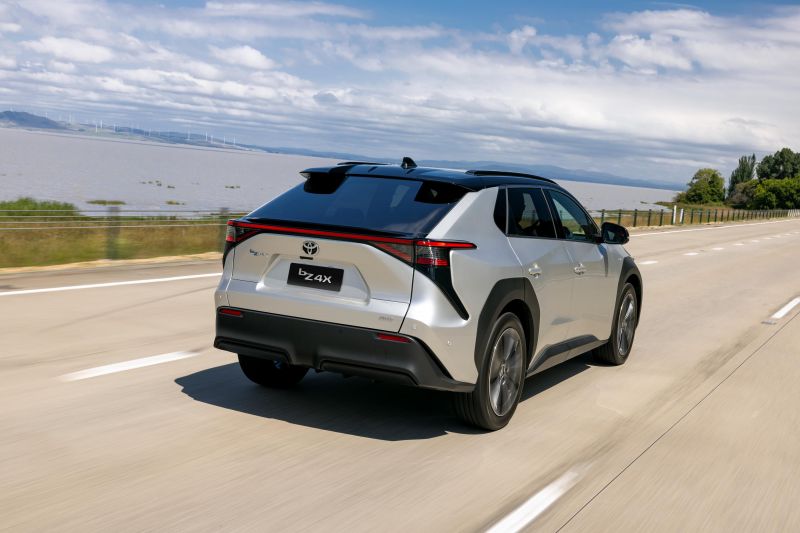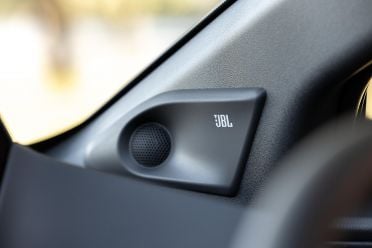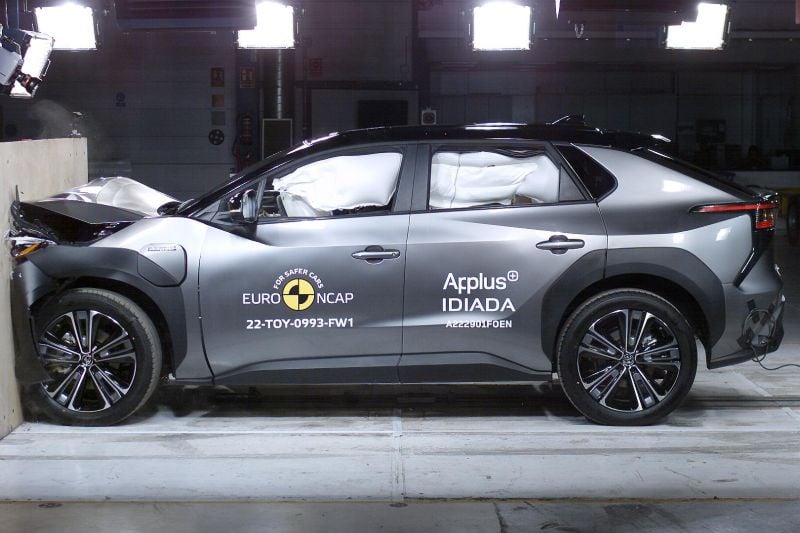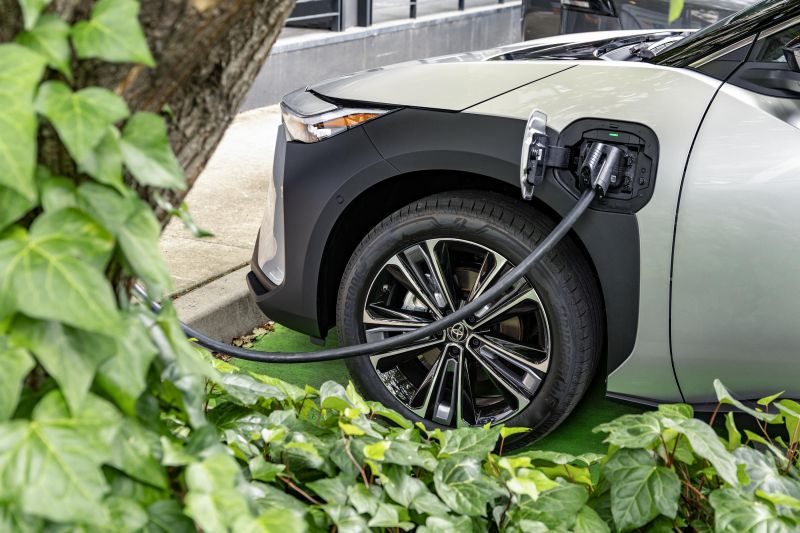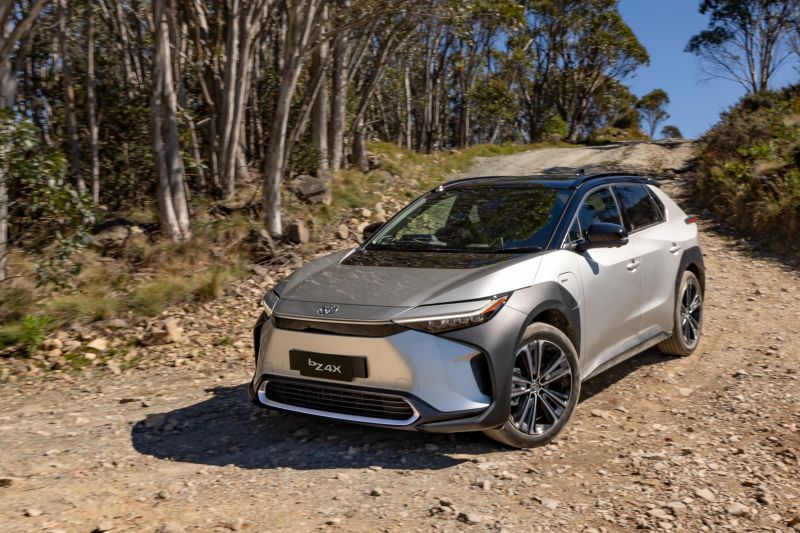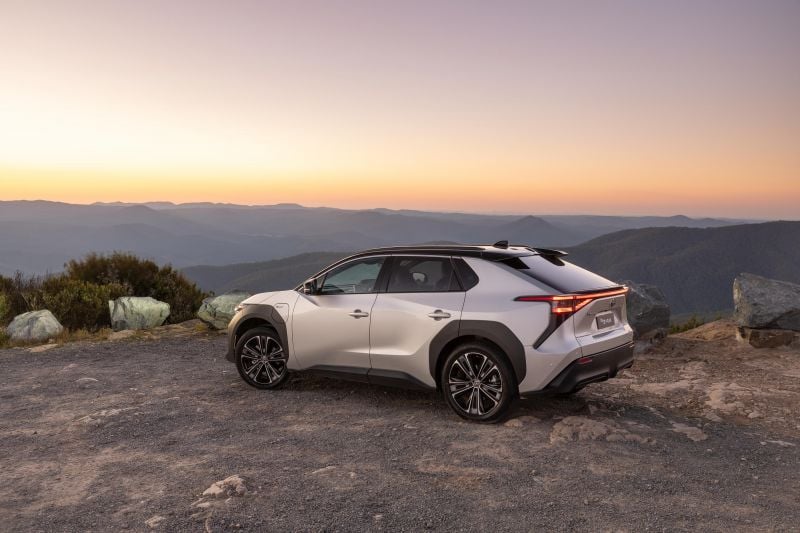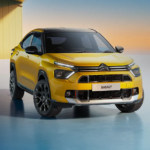
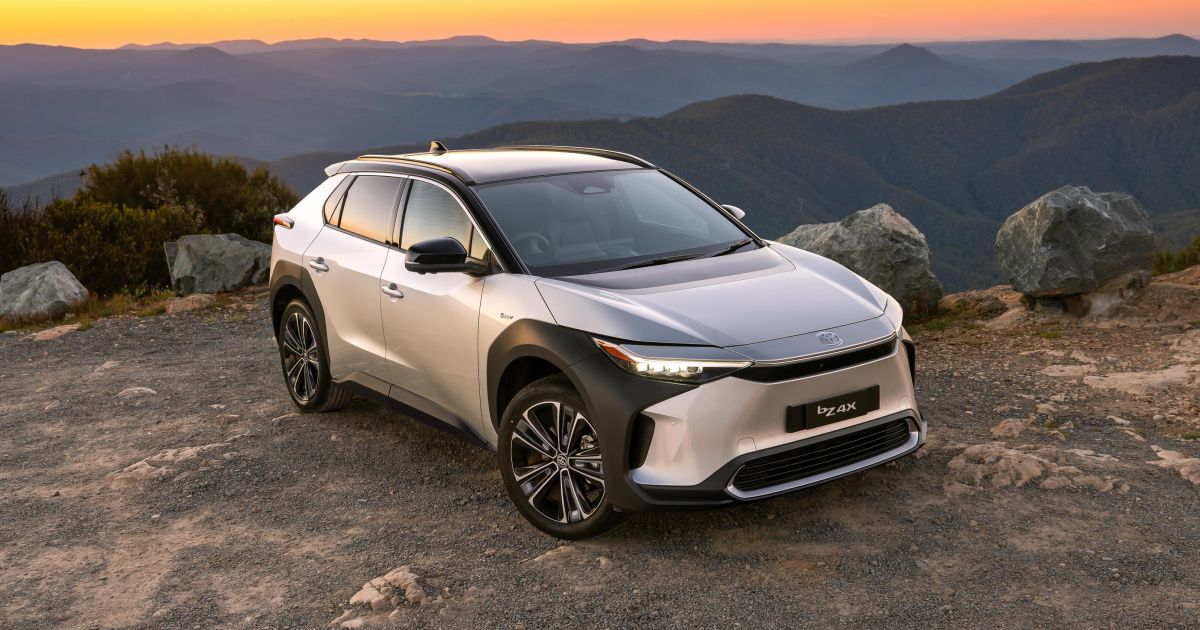
2024 Toyota bZ4X review | CarExpert
[ad_1]
Toyota finally has an electric car in Australia.
Debuted in 2021 and updated in 2023 based on customer feedback, the bZ4X is a similar size to the best-selling Tesla Model Y electric SUV – or the popular Toyota RAV4 – on the outside.
It’s also priced within $600 of the base Model Y at launch, and like the Tesla offers a choice of single- or dual-motor power. But this isn’t an electric car aimed at early adopters keen to forget everything they knew about motoring.
According to bZ4X chief engineer Masaya Uchiyama, it’s “the first step for the [electric vehicles]” in the multi-pathway approach to reducing carbon we’ve heard so much about from Toyota.
Toyota has also said it’s only expecting to deliver around 1500 examples in the first 12 months on sale, including vehicles owned by Toyota Australia itself as part of a novel new Netflix-style subscription service.
Does the bZ4X deliver on that promise?
How does the Toyota bZ4X compare?
View a detailed breakdown of the Toyota bZ4X against similarly sized vehicles.

Toyota
bZ4X
How much does the Toyota bZ4X cost?
Toyota is offering two variants of the bZ4X, each getting different drivetrain layouts.
Toyota bZ4X pricing:
- 2024 Toyota bZ4X FWD: $66,000
- 2024 Toyota bZ4X AWD: $74,900
Prices exclude on-road costs
To see how the bZ4X shapes up against its rivals, use our comparison tool.
What is the Toyota bZ4X like on the inside?
Although it won’t be too offensive to anyone with a RAV4, the bZ4X does look and feel like a new take on what Toyota has traditionally offered.
The wide, flat central tunnel rises dramatically up to meet the dashboard, and the steering wheel is a little, almost Peugeot-ish unit sitting on a funky pod below a high-set digital instrument binnacle. Throw in the slim dashboard and low scuttle, and it’s a nice place to spend time.
Regardless of which trim you select, the driver and passenger sit in comfortable seats packing plenty of adjustment. There’s plenty of space for big bodies with the electrically adjustable driver’s seat set down low, and I was just able to see the instrument binnacle over the low-set wheel.
Although it feels like a high-quality material, the cloth trim on base bZ4X seats really feels as though is should be leather or leatherette when you consider it’s standard on a Tesla Model Y – or a RAV4 Edge AWD Hybrid, which also happens to be $8000 cheaper.
While we’re whinging, leaving out a wireless phone charger in the base model doesn’t feel appropriate in what’s meant to be a technology leader. The manually adjusted passenger seat is likely to be a non-issue for owners, but it also feels more Corolla than $70k electric hero.
Regardless of which model you opt for, the 12.3-inch touchscreen infotainment system is very good. It’s pretty to look at, responds quickly to inputs, and has a simple enough structure that owners stepping out of cars featuring much older tech won’t feel too lost.
Wireless smartphone mirroring is welcome, given the only USB ports that supports wired mirroring is an older, slower USB-A port. The driver’s display is utilitarian, offering a clear read on your speed, range, and energy consumption… but nothing more. It works, it’s not distracting, but it’s not exactly special either.
There are dual cupholders at the base of the central tunnel, and a huge space below that floating tunnel in which you can store things. There’s also a deep bin under the padded central armrest – but a conventional glovebox under the passenger side of the dashboard is a notable omission.
According to Toyota, it had to choose between fitting a glovebox or a more efficient, radiator-style heater beneath the dashboard, and it opted for the latter.
Rear seat space is a mixed bag. Legroom is excellent, with room for my lanky six-seven frame behind a full-sized adult’s seating position. Unlike a Model Y, the lithium-ion battery under the floor doesn’t force you into an awkward knees-up position.
Headroom isn’t all that flash, however. Between the sloping roofline and the raised rear bench, tall passengers will feel as though they’re pressed right up into the headlining. Neither model has much space, so the panoramic glass roof in the AWD isn’t to blame.
Reclining the backrest (up to 6.0 degrees) doesn’t really help, because there’s a chunky structural beam running across the roof behind the rear headrests.
Central passengers are perched on a raised section, and need to compete with a slight hump in the middle of the floor. It’s odd given the e-TNGA platform underpinning the bZ4X is supposedly a dedicated electric setup, and most EVs have a flat floor.
A fold-down central armrest, air vents, and dual USB-C ports feature back there. ISOFIX points are present on the outboard rear seats, as does a trio of top tether points for child seats.
Claimed boot space is 452 litres in the FWD, and 441 litres in the AWD. That’s down on the 580 litres on offer in the RAV4 range-topper (which also has a spare wheel), and on the 560 litres on offer in a Hyundai Ioniq 5.
With that said, the floor is low and flat, and there’s storage beneath it for the sliding luggage cover.
What’s under the bonnet?
There’s no ‘frunk’ like you get in some other EVs, though you get the option of single motor FWD or dual-motor AWD.
| Model | bZ4X FWD | bZ4X AWD |
|---|---|---|
| Drivetrain | Single-motor electric | Dual-motor electric |
| Battery | 71.4kWh lithium-ion | 71.4kWh lithium-ion |
| Power | 150kW | 160kW |
| Torque | 266Nm | 337Nm |
| Driven Wheels | Front-wheel drive | All-wheel drive |
| Weight | 1960kg (kerb) | 2055kg (kerb) |
| Energy efficiency (claimed) | 16.9kWh/100km | 18.1kWh/100km |
| Energy efficiency (as tested) | 15.4kWh/100km | 18.1kWh/100km |
| Claimed range | 436km | 411km |
| Max DC charge rate | 150kW | 150kW |
How does the Toyota bZ4X drive?
The bZ4X drives… like an electric Toyota.
Revelation, right? There’s very little groundbreaking about the first electric Toyota, but it’ll make anyone hopping out of a RAV4 or Corolla Cross feel right at home.
Toyota is expecting the front-wheel drive to dominate on the sales charts, and it’s the model we’d recommend. At low speeds the bZ4X has almost no learning curve. Put your foot down and it picks up smoothly off the line, with no real scrabbling from the front tyres or tugging from the steering wheel.
You get silent thrust, which is enough to gently squeeze you back in your seat – but not enough to make the average Camry Hybrid driver think they’ve accidentally stepped on the hyperdrive button. Although the all-wheel drive packs more of a punch, it doesn’t feel all that much faster in the real world.
Regardless of which powertrain you choose, the way it steers and rides will be familiar to anyone who’s experienced a modern Toyota SUV.
Ride quality at low speeds was good around Canberra, nicely soaking up potholes, speed humps, and roads damaged by heavy rains. Despite its 2.0-tonne kerb weight and 20-inch wheels – even on the base model – it doesn’t smack or slap into sharp bumps like some rivals.
The little steering wheel does make this feel a bit easier to manoeuvre in tight spaces than a RAV4, and the way the steering is set up allows you to keep your hands in the same spot as you squeeze through most urban areas.
Besides the silence and smoothness, the steering is the biggest differentiator between Toyota’s electric era and the hybrids that came before.
Regenerative braking (which harvests energy by turning the electric motor into a dynamo to slow the car, rather than using the mechanical brakes) is very gentle in the car’s default setting, and even in its more aggressive mode necessitates you use the brake pedal.
That’ll make owners hopping out of petrol or hybrid cars feel at home, but does mean you don’t get to enjoy one-pedal driving like is offered in a Tesla or Hyundai Ioniq 5. The option for even more aggressive regen would be welcome.
At higher speeds, the bZ4X settles nicely into a cruise. Ride quality remains excellent at 100km/h on typically average Australian highways, and the suspension has been smartly tuned to effectively keep the car’s two-tonne mass in check.
It’s nicely controlled over big country crests, and doesn’t bounce or bob around like a boat through big dips in the road. We recently found the Hyundai Kona Electric, for example, struggled to keep itself in check on our high-speed test road at Lang Lang; the bZ4X doesn’t get out of shape in the same way, despite its hefty kerb weight.
There’s even a bit of fun to be had on sweeping roads, provided you keep the fact this is a big, heavy car in mind.
One of the downsides of going electric is the fact there’s no petrol engine to drown out road noise at higher speeds. You notice road roar from the coarse chip highways common in rural Australia at 100km/h more here than in a RAV4, which may have drivers upping the stereo volume by one or two notches.
Toyota’s driver assists are excellent. The adaptive cruise is smooth and smart, the lane-keeping assist only intervenes when it’s actually necessary, and the lane-centring doesn’t want to rip the wheel out of your hands. The omission of blind-spot monitoring from base models is hard to understand, however.
Along with plenty of high-speed country roads, our launch drive included a stint on a reasonably rugged fire trail.
The bZ4X platform has also given rise to the first electric Subaru, the Solterra. One of the results of the tie-up is X-Mode, which is Subaru parlance for off-road mode.
Along with unique tuning to the throttle and traction control, you’re able to set the bZ4X AWD in what’s essentially a watered-down version of Crawl Control from the LandCruiser.
You set your speed, and it will maintain it on tricky surfaces – and it worked over some loose, rocky tracks. Likewise hill descent control.
The motor control is excellent, with almost no slipping or scrabbling from the tyres, and the 212mm of ground clearance on offer is on a par with a Subaru Outback. Will owners ever actually do this? Unlikely – but the option is there…
What do you get?
bZ4X FWD highlights:
- LED headlights with auto high-beam
- 20-inch wheels
- Privacy rear and side glass
- Faux leather upholstery
- Heated front seats
- 8-way powered front seats
- Reclining, 60/40 split folding rear seats
- Dual-zone climate control
- Keyless entry and start
- Automatic windscreen wipers
- Auto-dimming rear-view mirror
- 7.0-inch digital driver display
- 12.3-inch touchscreen
- DAB+ digital radio
- Toyota Connected Services
- Wireless Apple CarPlay, Android Auto
- 4x USB-C, 1x USB-A port
- 6-speaker sound system
bZ4X AWD adds:
- Premium Soft-Tex seat trim
- 9-speaker sound system
- Heated steering wheel
- Cooled front seats
- 10W Qi wireless phone charger
- Kick sensor for powered tailgate
- Surround-view camera
- Intelligent parking assist
Is the Toyota bZ4X safe?
The bZ4X has a five-star ANCAP safety rating based on testing carried out by Euro NCAP in 2022.
It scored 88 per cent for adult occupant protection, 87 per cent for child occupant protection, 79 per cent for vulnerable road user protection, and 91 per cent for safety assist.
Standard safety equipment includes:
- 7 airbags
- Autonomous emergency braking
- Front and rear
- Pedestrian and cyclist detection
- Adaptive cruise control
- Lane-keeping assist with lane centring
- Front and rear parking sensors
- Reversing camera
bZ4X AWD adds:
- Blind-spot monitoring
- Safe exit assist
How much does the Toyota bZ4X cost to run?
The bZ4X is backed by a five-year, unlimited-kilometre warranty.
That extends to seven years on the driveline, provided the car is serviced annually in the Toyota network.
The battery is warrantied for five years, plus an additional five provided the vehicle is subjected to an annual battery health check. Toyota guarantees the battery for eight years to 70 per cent of its initial capacity.
Maintenance is required every 12 months or 15,000 kilometres, and the first five services will each cost you $180.
CarExpert’s Take on the Toyota bZ4X
The bZ4X is exactly what you’d expect of an electric Toyota.
It drives with polish, the interior blends familiar elements with a more modern and interesting layout, and the front-wheel drive in particular is priced to sit in the hottest part of the electric car market.
We’d love a bit more boot space, and the option of more range from the lithium-ion battery pack to bring it into line with a Tesla Model Y though.
Toyota clearly has set out to develop an SUV that’ll make RAV4 Hybrid drivers ready to make the leap into electric motoring feel comfortable, and on that front the bZ4X delivers.
Beyond that, it’s the biggest carmaker in Australia’s first step into the world of electric cars. We’re keen to see what comes next.
Click the images for the full gallery
MORE: Buy a Toyota bZ4X
MORE: Everything Toyota bZ4X
[ad_2]
Source link
Add a comment Cancel reply
Categories
- Car News (8)
- Car Reviews (2)
- Cars News (95)
- Electric Cars (79)
- Electric Two-wheeler (76)
- Electric Vehicle (78)
- Experts Reviews (3)
- Gallery (11)
- New Arrivals (380)
- Uncategorized (6)
- Used Cars (54)
- XUV Cars (4)


